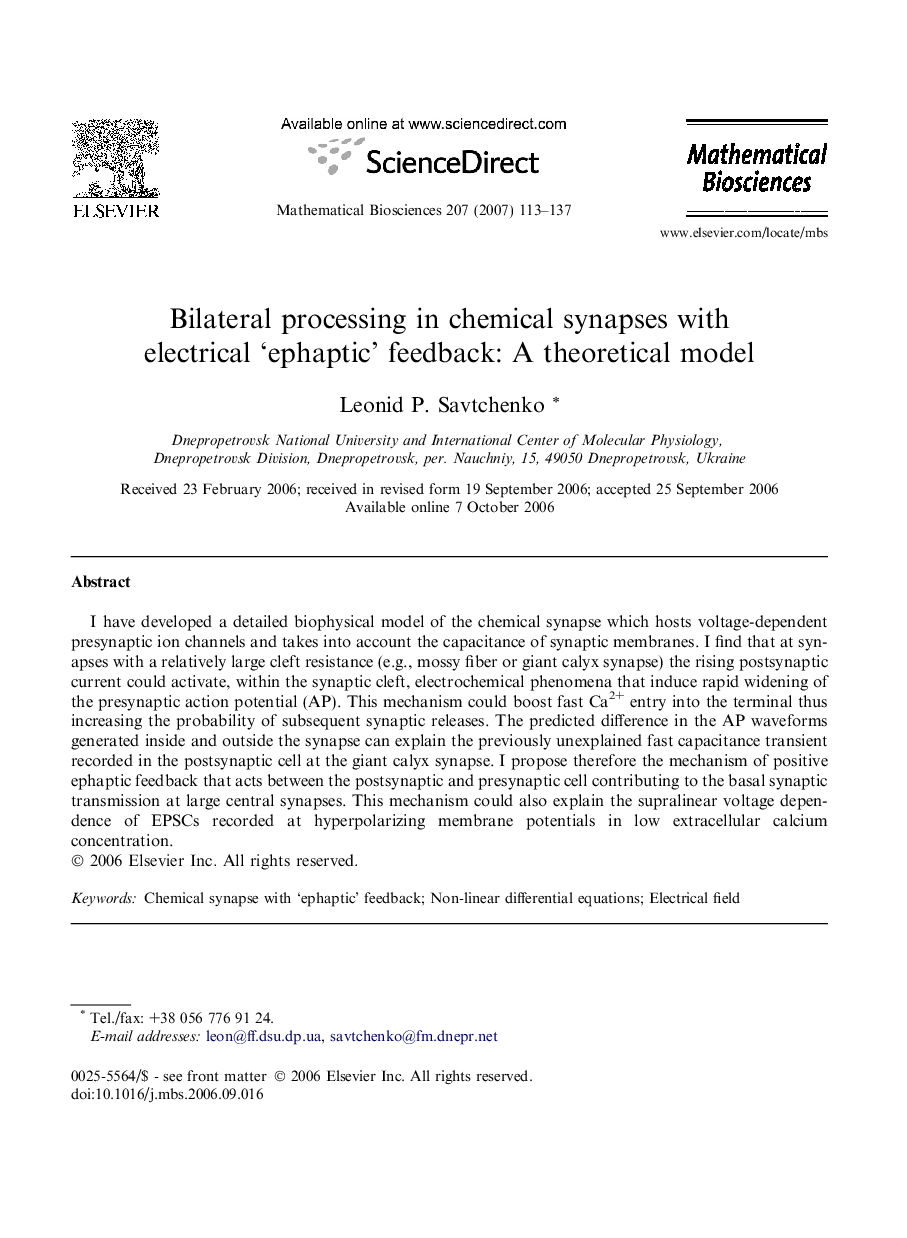| Article ID | Journal | Published Year | Pages | File Type |
|---|---|---|---|---|
| 4501072 | Mathematical Biosciences | 2007 | 25 Pages |
I have developed a detailed biophysical model of the chemical synapse which hosts voltage-dependent presynaptic ion channels and takes into account the capacitance of synaptic membranes. I find that at synapses with a relatively large cleft resistance (e.g., mossy fiber or giant calyx synapse) the rising postsynaptic current could activate, within the synaptic cleft, electrochemical phenomena that induce rapid widening of the presynaptic action potential (AP). This mechanism could boost fast Ca2+ entry into the terminal thus increasing the probability of subsequent synaptic releases. The predicted difference in the AP waveforms generated inside and outside the synapse can explain the previously unexplained fast capacitance transient recorded in the postsynaptic cell at the giant calyx synapse. I propose therefore the mechanism of positive ephaptic feedback that acts between the postsynaptic and presynaptic cell contributing to the basal synaptic transmission at large central synapses. This mechanism could also explain the supralinear voltage dependence of EPSCs recorded at hyperpolarizing membrane potentials in low extracellular calcium concentration.
